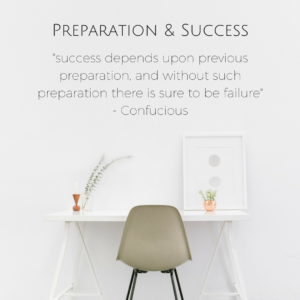 Is there any point in planning for success or for the year ahead?
Is there any point in planning for success or for the year ahead?
For those of us in the productivity and organizing field the answer is very simple.
Yes. If you plan your work, activities, schedule, career, day or anything for that matter, you are far more likely to be available when opportunity appears. I’ve blogged before about the planning and luck relationship. However, you are also more likely to be equipped to respond to adversity when it show up.
But sometime external circumstances can make planning feel futile. What about the uncertainty of the world we live in today as 2025 greets us? What about the political turmoil around the world we read about every day? Add to that the economic uncertainty that both those situations create and planning feels like a lost cause.
The Dichotomy of Control
It is true that most of us don’t have any control over what is happening politically on the other side of the world. While we may have reason to worry and be concerned about it, we don’t have any control over it.
However, the dichotomy of control reminds us that there are many things over which we DO have control. The concept is a very old one dating from the Roman Stoic Epictetus. According to the Stoics, there were really only two things we had direct control over. They are our actions and what or how we think about things. The past, what other people think or do, and even our bodily sensations (versus voluntary actions) are in fact outside our control.
 Planning and Control
Planning and Control
It is the things within our control that we can use to plan for success. There are four steps needed to create a plan for the year and they all include elements within our control.
Step 1
Step OUTSIDE of our comfort zone. This is where learning and expansion occurs. This is where were take a risk to create a new lead magnet, try a new exercise routine or commit to an accountability partner. Actions here include creation of a vision and overall goals for the year.
Step 2
Step UP to figure out the real work. What actually needs to be done to accomplish your goal? Who would you need to become to make it a reality? Actions here might include figuring out how many days a week you can work or work out. Do you have the time to train for a marathon and support for the rest of your life while you are training?
Step 3
Step IN to create a map or menu of actions to turn your vision into a reality. What are the outcome goals for each quarter, month and week that you would have to attain? Outcome goals are the markers along our path that tell us whether or not we are heading in the direction of our larger vision. What are the process goals – the specific actions you would take – to accomplish those outcome goals? If you are looking for 1000 followers on YouTube for your business, how often do you need to post to get that result? How big a calorie deficit do you need, and how will you ensure that happens, to lose that 10 lbs?
Step 4
Step THROUGH the fog that gremlins of self doubt, fear, procrastination create when they show up. What tools that you can access easily, consistently and quickly when you are discouraged frustrated or putting off trying to post that lead magnet?
 Planning for Success
Planning for Success
The Stoics believe “We need to focus on “controlling the controllables” and cultivate an attitude of detachment from everything else”. When we focus on what we can control, which includes all four steps of the planning process, we set ourselves up for success. This focus together with equipping ourselves with strategies and tactics to manage our response to those things outside of our control, is planning for success.







 Service & Livelihood as an Entrepreneur
Service & Livelihood as an Entrepreneur
